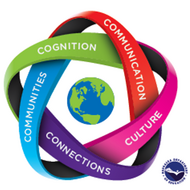WL Self Assessment Circles Intermediate Low
(View Complete Item Description)Research shows that engaging students in self-assessment positively impacts language learning, motivation, and learner autonomy. To help World Language Educators accomplish this, the Nebraska Department of Education invited experienced world language teachers across the state to create student-friendly assessments in the form of can-do statements in the summer of 2022. This document is a student-friendly self-assessment activity for Intermediate Low world language learners created based on the 2019 Nebraska World Language Standards. The language use described in all can-do statements is meant for the target language, except for the second for standard 3.1 and the first for standard 4.2. It is recommended that word language teachers engage students with this document three times in an academic year: pre-course, mid-course, and post-course. Engaging students with this self-assessment activity will help students see growth over time and hopefully attribute growth to effective learning practices. Please feel free to contact chrystal.liu@nebraska.gov for any questions and concerns.
Material Type: Assessment



















